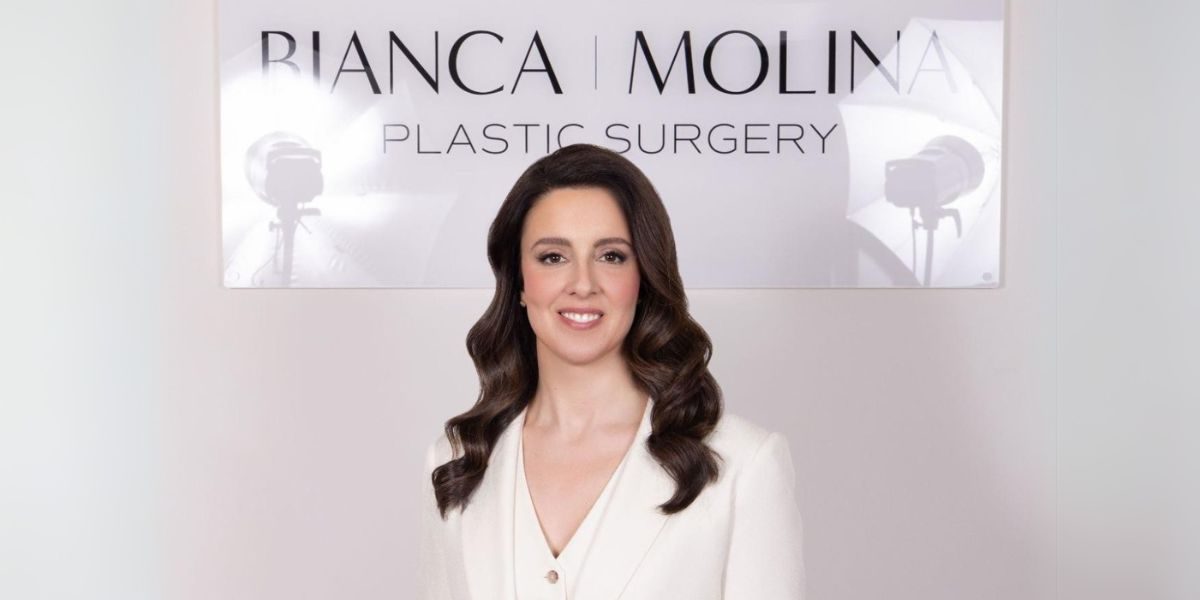By: Bailey Beckett
In the ever-evolving world of aesthetic medicine, Dr. Bianca Molina is recognized not just for her technical precision, but for her thoughtful, balanced approach to beauty. The board-certified plastic surgeon, whose practice is based in Manhattan’s Greenwich Village, represents a new generation of cosmetic doctors—those who prioritize subtle enhancement over dramatic transformation.
“I don’t believe in this quest for youth,” Dr. Molina says. “People are so focused about turning back the clock. For me, it’s about maintaining the person underneath.”
Molina, a graduate of NYU and New York Medical College, trained at Mount Sinai Beth Israel and completed a prestigious fellowship in Plastic and Reconstructive Surgery at Ohio State University. Her resume includes an extensive breadth of surgical and non-surgical procedures, from facelifts and tummy tucks to Botox and PRP therapy. But what sets her apart is her philosophy: whisper, don’t shout.
“Plastic surgery shouldn’t scream,” she says. “It should whisper.”
That mindset is central to how she guides patients, especially younger ones. “I’m seeing more patients in their twenties, particularly Gen Z,” she says. “They’re concerned, but concern might be the wrong emotion. I tell them, let’s just do reasonable treatments for your age. Conservative Botox, microneedling, and proper skincare can go a long way.”
Dr. Molina emphasizes a “multimodal” strategy for maintaining healthy skin—combining proper skincare with non-invasive procedures like biostimulators, fillers, and laser treatments. “Skin quality is impacted by so many things—sun exposure, smoking, diet. What you do in your twenties really shows up in your forties and fifties.”
While her approach with younger patients is cautious, Molina has also noted a shift in surgical techniques.

Molina is also excited about the rise of supportive technologies like the pH4B mesh, a resorbable material that dissolves in the body, potentially encouraging new collagen growth and improving revision surgeries. “We’re now placing implants above the muscle again, which used to be frowned upon. But with mesh support, we’re getting positive results with less recovery time.”
The New York patient, she says, is typically more conservative than their West Coast counterparts. “L.A. is intense,” Molina laughs. “Here, we have work to do. People want to look refreshed, not redone.”
Still, the demand for aesthetic treatments continues to grow across all demographics—including men. “I have male patients who come in for Botox, fillers, eyelid surgery. CEOs, in particular, want to look vibrant and alert. We’re in an ageist society, and they don’t want to be perceived as tired or past their prime.”
Laser treatments, Dr. Molina adds, still have a strong place in the aesthetic toolkit despite consumer confusion and the influx of non-medical spas offering watered-down services. “It’s real technology,” she notes. “And it matters who’s operating the laser. I always say you have to be careful having a non-MD put a laser on your face.”

Throughout her career, Dr. Molina has maintained a focus on patient safety, long-term outcomes, and aesthetic integrity. “We’ve evolved so much as a field,” she says. “Facelift techniques have improved. Incisions are better hidden. And we’re constantly getting safer.”
That evolution extends to her view of patient expectations and mental health. “Body dysmorphia is a big issue, especially among younger patients,” she says. “As a doctor, you need to listen closely. The goal is never to make someone look like a different person. You have to be on the same page from the beginning.”
It’s a philosophy rooted in ethics as much as aesthetics. “A good doctor will never perform a procedure that won’t make the patient look better,” she says.
Dr. Molina’s practice, located at 25 Fifth Avenue in New York City, offers a full spectrum of treatments—both surgical and non-surgical—but the underlying message remains consistent: beauty isn’t about chasing perfection. It’s about refinement, realism, and feeling like the best version of yourself.
Disclaimer: The information presented in this article is for general informational purposes only and does not constitute medical advice. Results from aesthetic procedures may vary between individuals. For personalized advice and treatment, it is recommended to consult directly with a qualified medical professional.
Published by Drake M.

















